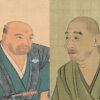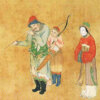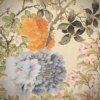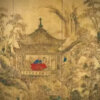Suzuki Kason: A Master of Bird-and-Flower Paintings, Who Received a Gold Medal at the Japan-British Exhibition
Spring Warm

Cold Wind

White Dew

Group Pigeon
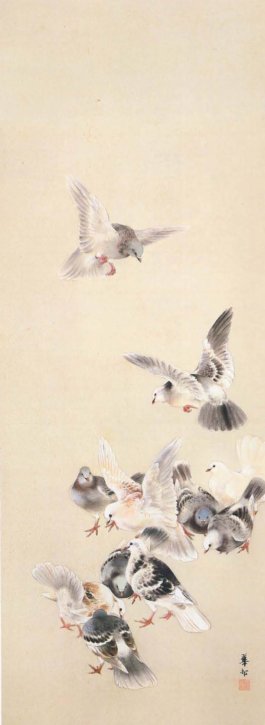
Suzuki Kason (1860-1919) was born in Shitaya, Edo, and learned Shijō school paintings from Nakajima Kyōsai. Originally, the fact that Edokko tried to learn the Shijō school paintings method, which was the Kyoto‐Osaka area style of paintings, was a very interesting phenomenon, and he can be a research target.
The most spectacular thing in Kason’s painting performances is that the gold medal was awarded to the “Uchū-Watashibunezu” exhibited at the 1910 Japan-British Exhibition. At this Japan-British Exhibition, a huge velvet Yūzen wall hanging “Sekai Sankei Setsugetsuka” by Takeuchi Seihō, Yamamoto Shunkyo, Tsuji Kakō, and others, was exhibited and became a big topic.
The “Spring Warm Picture” paints the scene of late spring, where pea flowers bloom and butterflies dance. In the “Cold Wind Picture,” two small birds are placed on the twigs where dead leaves are scattered, and the cold wind blows down, and capturing the moment when the twigs sway due to the weight of the small birds. The “White Dew Picture” places a full moon on top of the white chrysanthemum, expresses the time it takes for dew to condense on the flowers and leaves of the chrysanthemum as the night goes on. In the “Group Pigeon Picture” expresses the dynamic movement of the pigeon, which is different from the previous three pictures.
The “Cold Wind Picture” and the “Group Pigeon Picture” perfectly express the momentary ecology of birds, which was learned from the accumulation of bird sketches, and show that Kason had extraordinary skills. What can be seen as common from these works is not just sketching, but thinking of sketching as one means or one technique, and trying to express the spirit of the painter by freely using that technique.

